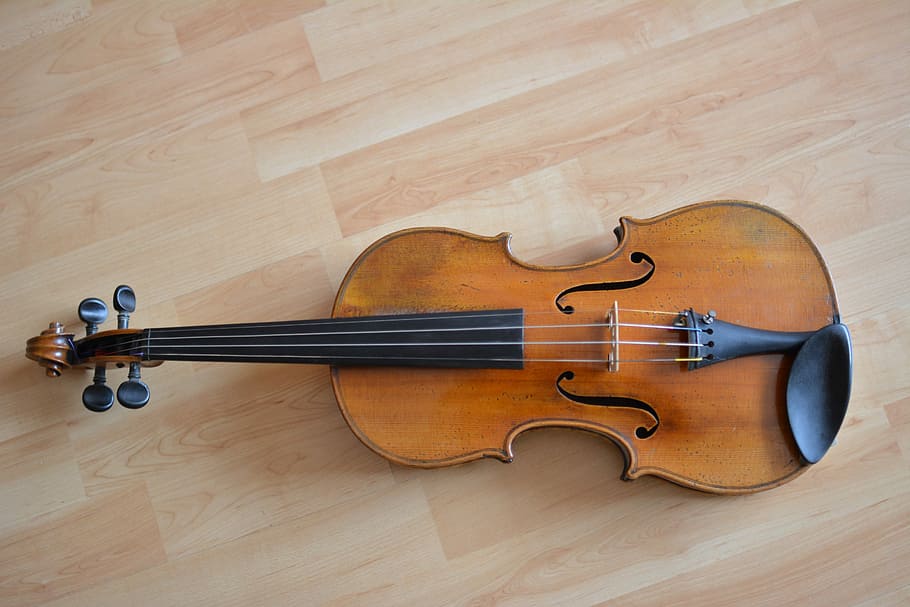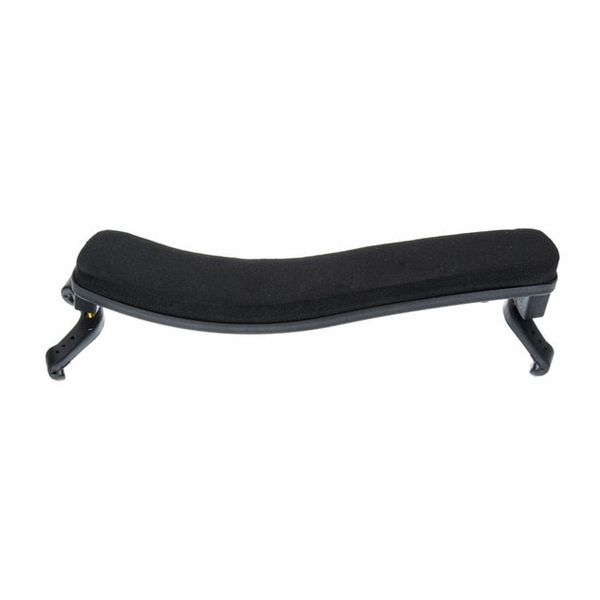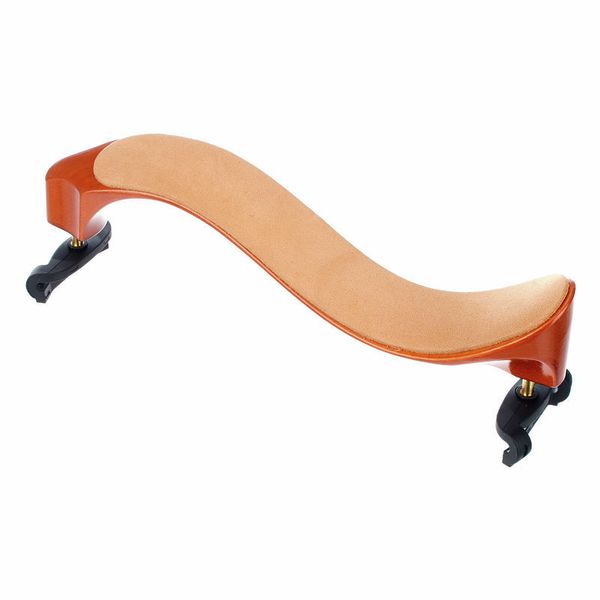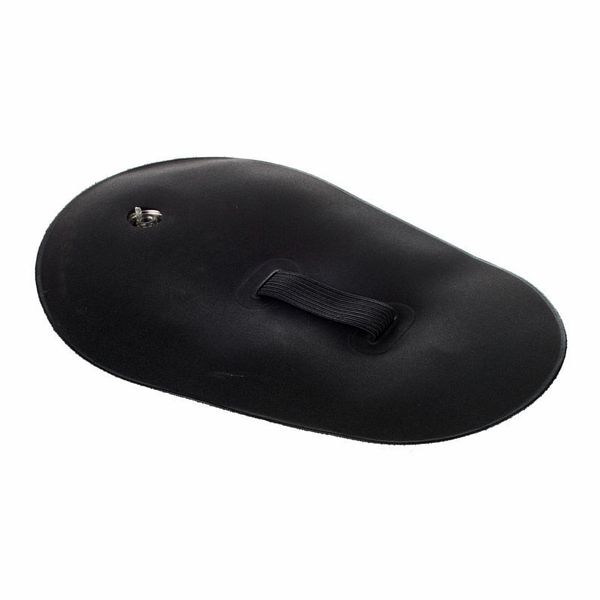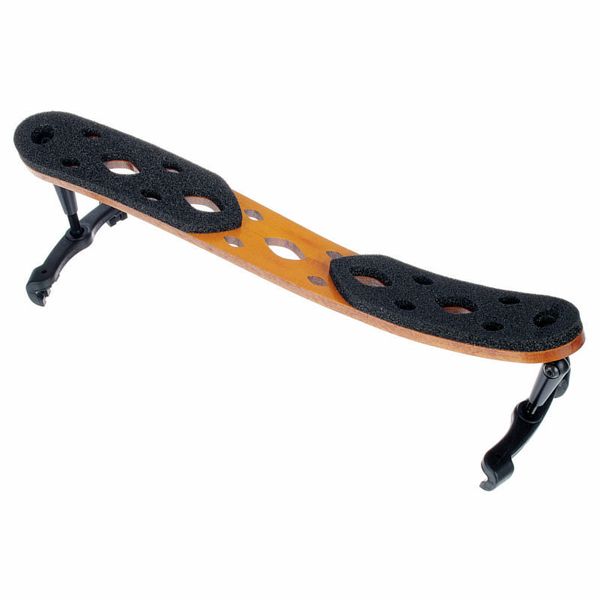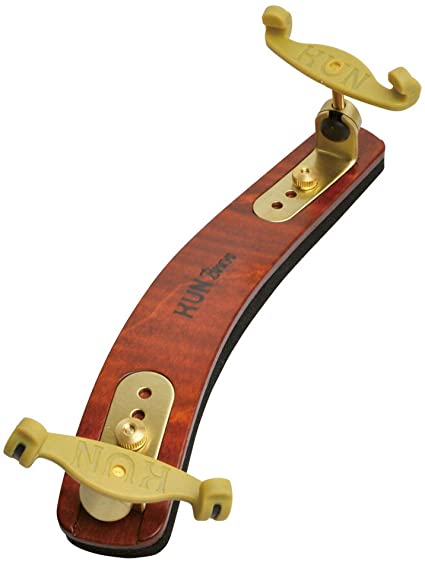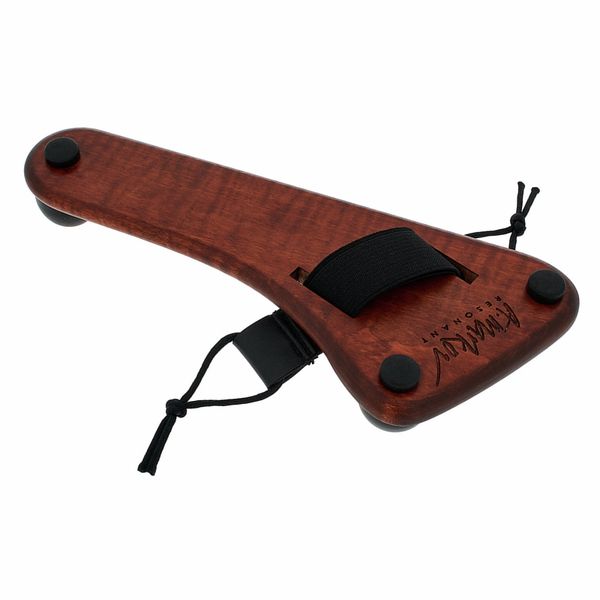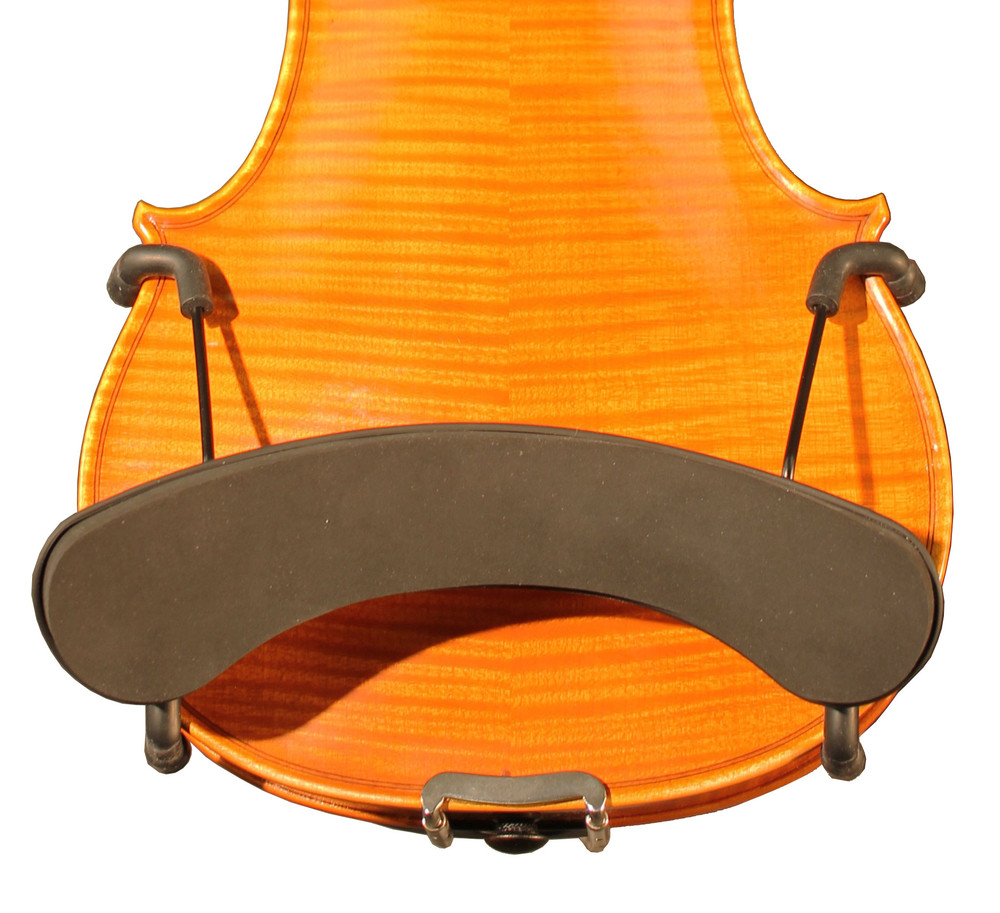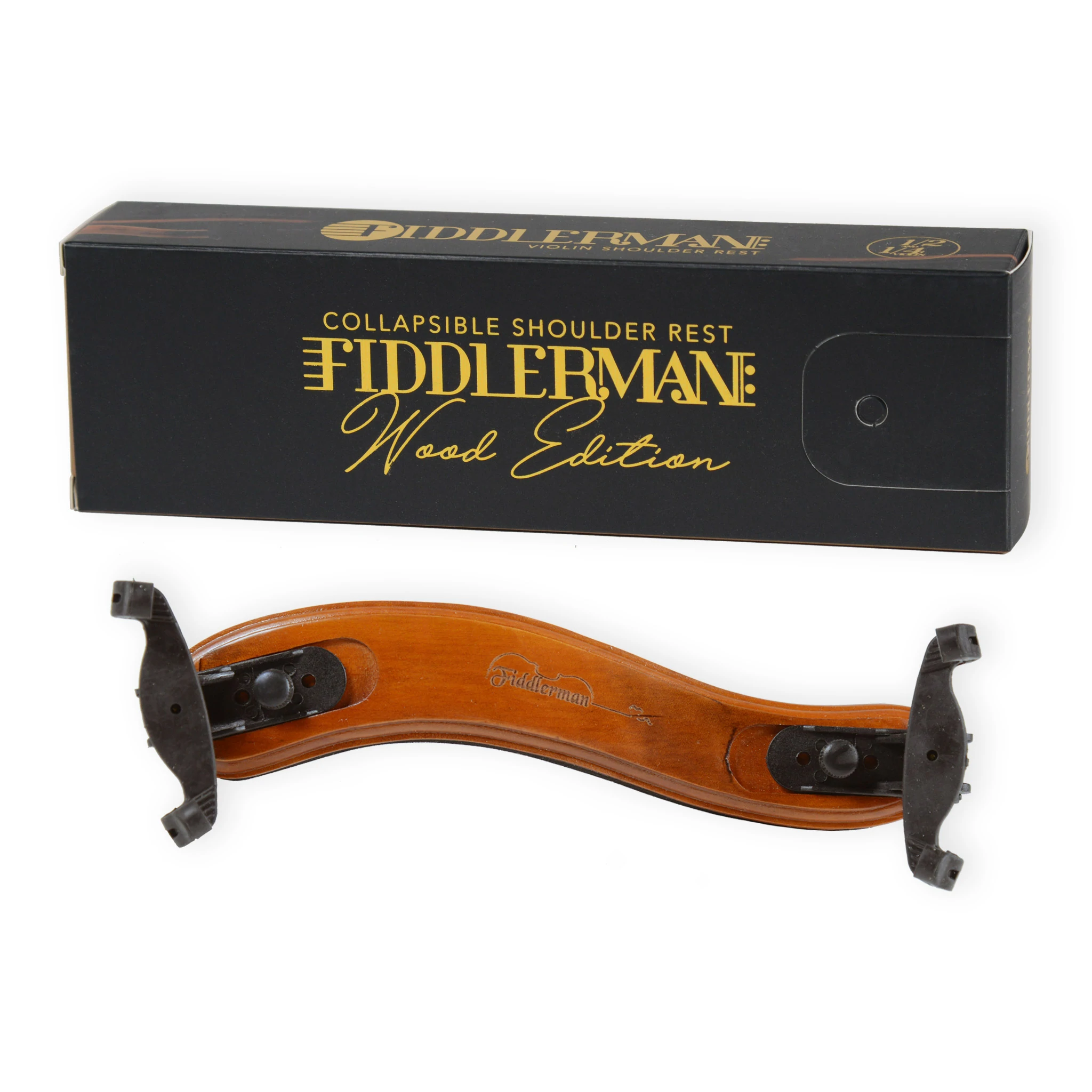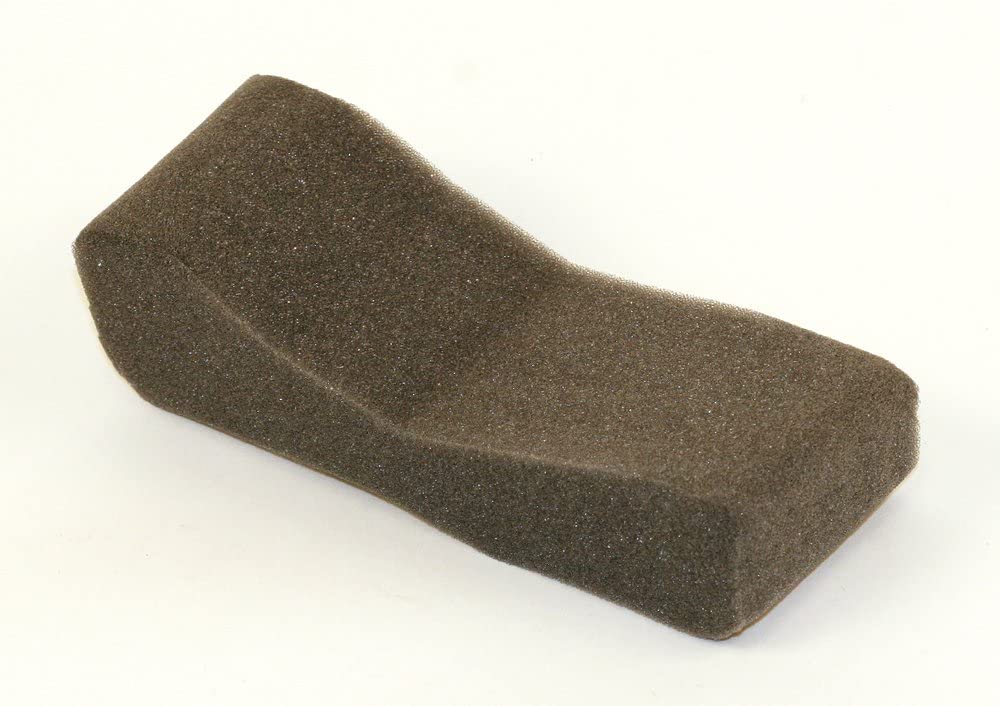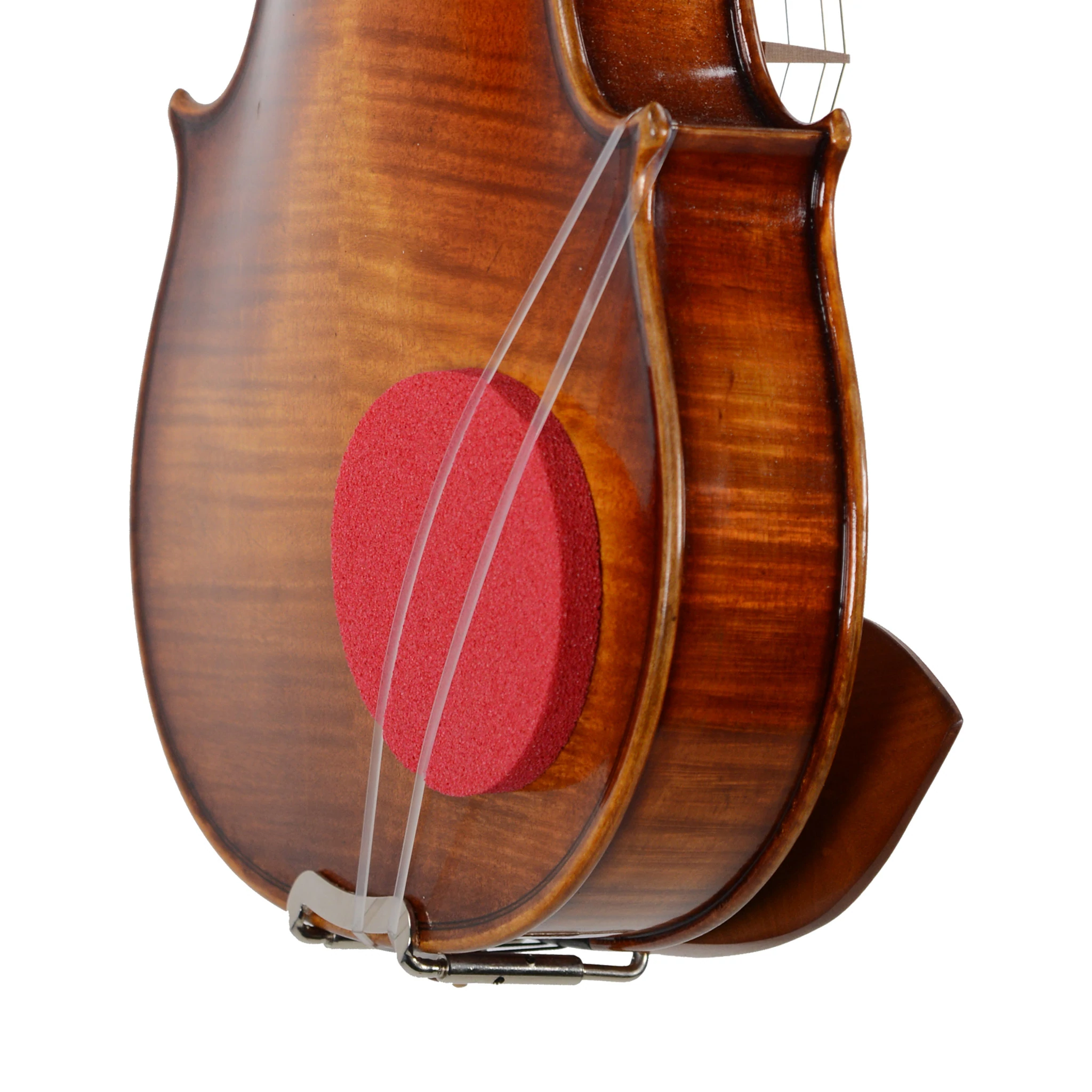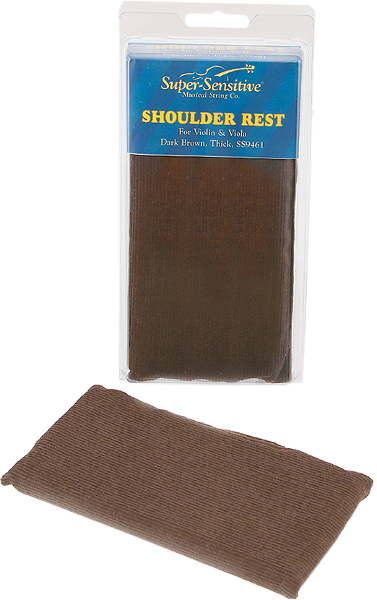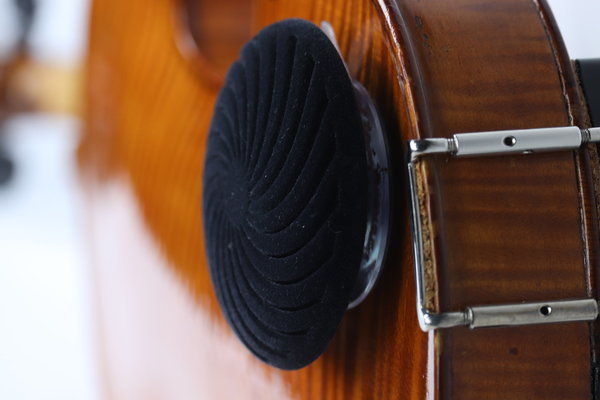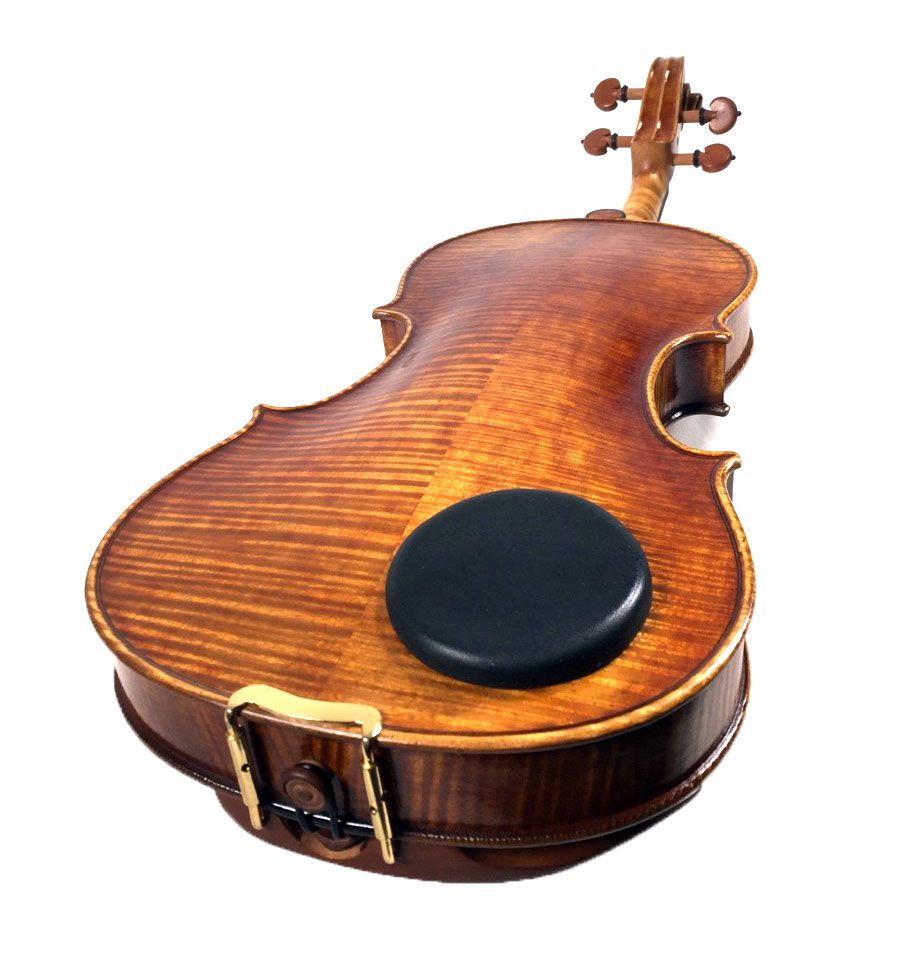- How to Find the Best Violin Shoulder Rest - April 12, 2022
- How to String a Violin – A Guide to Changing Violin Strings - April 3, 2022
- How to Tune a Violin: A Guide to Tuning the Violin - March 21, 2022
Shoulder rests help players hold the violin stably and comfortably while freeing up the left hand. The kind of shoulder rest you’ll need depends on your playing posture, build, chinrest and instrument. I recommend ensuring your chinrest is comfortable and well-fitted before looking for a shoulder rest, as chinrests are much less adjustable.
Bottom Line Up Front
Comfort and budget are undoubtedly the most significant considerations when choosing a shoulder rest. However, I suggest considering whether you’re looking for a model that will best adapt to you or whether you’d like a model that will make you play in a certain way. Many violinists have ‘bad’ postures they slip into when tired or stressed, and some rigid rests will help prevent that. If you’re looking to upgrade your shoulder rest or have difficulty with your current model, I strongly suggest going to a music shop with your instrument and trying a range of rest.
Quick list: Top 5 shoulder rests
- Kun Original Shoulder Rest $26.63: This is the most popular shoulder rest worldwide for all kinds of players. It’s straightforward to adjust to the desired height and angle and can last decades if well treated. The plastic feet will probably get worn down over time, but you can buy replacement ones from Kun online. There is also a collapsible model which fits into small violin cases.
- Wolf Forte Primo $18.50 and Wolf Forte Secondo $21.30: The other prominent shoulder rest brand is Wolf, which offers two standard rests: the ‘Primo’ and the ‘Secondo’. Both models are broader and more ‘cushiony’ than the above Kun, can extend further, and are more flexible. However, because of their flexibility (the main body of the rest is bendable), it’s possible to set them up in a way that will be detrimental to your posture. The ‘Primo’ has a relatively straight form and the ‘Secondo’ a greater curve; it’s really down to trying them out to see which one suits you better! Many players find Wolf’s width and texture more comfortable than Kun’s. There is also a handy image of a wolf on the underside of the rest, which can help children put it on the right way around.
- Bon Musica Violin Shoulder Rest $131.00: The Bon Musica rest is the most robust and adjustable model. It’s divided into 2 parts so that you can alter the width, as well as the height and angle. The exceptionally long left-hand side is designed to hook over your shoulder, providing extra grip and comfort. Like other super-flexible rests, it can be tricky to find the perfect adjustments for you. As it is quite an investment, I recommend setting it up with a teacher or expert.
- Poehland Shoulder Pad $6.95: I used a soft cushion model like this one for several years before moving to a shoulder rest with feet. While it’s relatively easy to fashion your foam or sponge cushion, commercial models are inexpensive and tend to fit violins better. The button strap on the Poehland is adjustable so that you can move the pad to precisely the right spot. David Oistrakh used this model from the 1950s onwards!
- Kun Solo Shoulder Rest $41.00: If you like the Kun original and can afford to invest a bit more, the Solo is a great option. Instead of screws, sliding mechanisms keep the feet in place. The sponge rubber is of higher quality and lighter, and the width is slightly larger, which many players find more comfortable. I find that this shoulder rest helps me maintain a good posture when playing.
Shoulder Rest Criteria
There are hundreds of different models on the market, and it can be daunting to know where to start looking. These are the main elements to consider:
Comfort
The sole purpose of a shoulder rest is to allow you to support the violin with the weight of your head. If a model feels comfortable for more than 5 minutes of playing, it’s likely to be right for you!
Budget
Shoulder rests are not the only necessary accessory for playing the violin. How much can you afford to spend? Sliding rests with feet begin at approximately $10, and luxury models can cost more than $250. Foam and sponge rest cost between $5 and $20, while inflatable cushions range between $30 and $150.
Flexibility
If you’re an advanced player or have already tried several different types of rest and been left unsatisfied, you may be looking for a model which can adapt to you in specific ways. If this is the case, a highly adjustable sliding rest is most likely the best option for you. On the other hand, you may want a more rigid rest that will ensure you maintain a particular posture.
Durability
Do you expect your shoulder rest to last several years, or are you just trying the violin out? If the latter is the case, there is no need to buy a top-end model. Most budget options are imitations of the major brands, only constructed with lesser-quality materials that won’t last as long.
Do I need a shoulder rest?
While shoulder rests have become staple accessories for more and more players over the last few decades, not all violin schools believe they’re a good thing. Both fiddle and baroque techniques exclude shoulder rests and adopt different postures and bowing.
Some modern classical violin players don’t use shoulder rests either. This is mainly because of great historical players. Shoulder rests were not customary 80+ years ago, and great players from that era taught their technique to their students, who taught the same to the next generation, etc. These are some of the main arguments for not using a shoulder rest:
- They constrict the violin, which can dampen the sound.
- Fewer vibrations can be felt by the player, giving them less control over their sound.
- Violinists tend to move less when they use shoulder rests. Early 20th-century playing methods without rests incorporate more horizontal movement, which has both physical and musical benefits.
- Standard shoulder rests can force players to hold the instrument too high, creating unnecessary discomfort in both shoulders and arms.
I think it’s a good idea for all players to experiment with playing without rest and see if they experience any benefits. You can also try the mid-way option of a small piece of sponge/thick cloth placed on the collarbone or the Microgel rest. Of course, it takes a while to get accustomed to no shoulder rest (at least two weeks) and can feel quite uncomfortable at first. The first few times you try it, don’t play for too long as you might hurt your neck or shoulders, and remember not to raise your left shoulder to compensate. Even if you’re 100% sure you want to use a rest (as I am!), it’s helpful to know how to play without one in case you leave it behind one day and no one has a spare to lend you!
Shoulder rests by type
There are three types of shoulder rest: slide-on models with feet, foam or sponge rests and cushions, and suction/adhesive models.
Slide-on shoulder rests with feet
These are the most commonplace shoulder rests. They consist of a bracket with rubber feet at either end, which grips onto the violin’s back border. The main body is made of plastic, metal, or wood. While all slide-on rests are adjustable, there are two main types: rigid ones that ‘impose’ a posture and flexible ones that you can customize. The difficulty (even for professional players) is knowing precisely how you’d like to customize your shoulder rest. A position that seems perfect for the first five minutes might prove uncomfortable after an hour or two. That said, flexible slide-on rests can be set up in a ‘standard’ way, and over time you can experiment with minor adjustments.
Tips for using slide-on shoulder rests
- Make sure the feet are tightly fastened to the body of the rest before putting it on the violin; otherwise, it won’t grip properly
- While the rest must be tight across the violin back, don’t make it as tight as possible otherwise, it might restrict the resonance
- Experiment with different positions and angles. All shoulder rests can be uncomfortable if placed in a certain way, but there’ll probably be a ‘perfect spot’ that will suit you.
- Consider your violin case when you look for shoulder rests: does it have adequate space for the model you like? And if not, are you prepared to always carry it around separately?
- Make sure the rest is adequately high, so no hard material (metal or plastic) comes into contact with the violin’s back
- Never use a broken shoulder rest. It can seriously damage your violin if it snaps or caves in when you’re playing. If you feel the rest is starting to give or there’s a creaking noise, it’s time for a new one!
In the top 5 list above, the Kun models (n. 1 and n.3) are excellent rigid rests. N. 2 and n.4, Wolf and Bon Musica, are top flexible rests. Here are some more of the best slide-on shoulder rests with feet on the market:
Best budget rest: Artino SR44 Comfort Shoulder Rest $10.60
This is a rigid, Kun-like shoulder rest, available in all violin sizes and a range of colors. It’s comfortable and provides stability, but it isn’t made of high-quality materials and might not last a long time. It’s an excellent option for hobbyists and beginner players.
Best children’s rest: Kun Junior Collapsible in color $34.95
These colorful rests are similar to the Kun Original and Kun Collapsible. Straightforward to adjust, they’re available in all violin sizes and easily fit into any violin case. The feet’ lock’ into place, so they’re unlikely to slip.
Best wooden rest: Mach One Hook Shoulder Rest $ 64
Wooden rests tend to help the violin resonate. This elegant maple model is light, stable, and comfortable, with suede padding for extra grip and a hook (like the Bon Musica) for the shoulder. Mach One also has a version without a hook and an alternative shape better suited for higher necks.
Best inflatable rest: Playonair Jumbo Deluxe $42
When playing, this air cushion adapts to the violinist’s movements, providing unique flexibility that traditional bracket rests cannot do. The design’s main drawback is the time it takes to inflate it. The rest is available in different shapes and attaches with slide-on feet, while the cushion has a soft, suede finish. Some online reviews say that the air starts to leak out of the rest over time. The sensation is quite different from bracket models, so I suggest trying it in a music shop before buying.
Best slide-on luxury rests
Pirastro Korkfer Rest Model 2 $258.00
Pirastro rests are the most expensive and complex on the market. They can be adjusted to infinite degrees in a myriad of ways. Their ‘Model 2’ has distinctive diamond cuts along the maple body that reduce weight, making it the lightest available model. Berent Korfker, the developer of the rest, aimed to create a product that would reduce any unwanted compression effect. Therefore there is very little rubber in the feet (which only makes contact between the purfling and outer edge) and a special kind of alloy aluminum that barely resists vibrations. The maple body can be bent to mould over the player’s shoulder, and the pads are extremely thin.
Kun Bravo $79.00
This is my current shoulder rest! After almost 2 decades of using Kun Original, I decided to try the Bravo and found the difference worth the higher cost. The padded part of the rest is more comfortable, and there is a greater sense of grip when playing. I’ve been using it for almost a year now, and there is no ‘give’. I recommend this model to anyone who is looking for a rigid, high-quality shoulder rest.
Markov Resonant Shoulder Rest $109
This luxury model is an exception as it doesn’t have sliding feet. The rest consists of a sleek maple piece that attaches to the endpiece and right-hand bout with elastic and leather straps. Three silicone feet stabilize it across the violin back. I haven’t yet had the opportunity to try this rest, but I know players who say it boosts the violin’s resonance – quite the opposite of constricting it.
Best slide-on shoulder rest for long necks
Comford Violin Shoulder Cradle Gold Tall $89.00
This sturdy rest provides 3 inches of height: considerably more than most slide-on rests, which become less stable when you extend them to their maximum. It has four feet; two attach in the usual way and two clip-on further down the back border, just under the concave curves. This design was inspired by Yehudi Menuhin, who created four similar kinds of shoulder rests in the 70s and 80s but which are no longer in stock.
Best slide-on shoulder rest for short necks
Fiddlerman Wood Violin Shoulder Rest $22.89
This is a fantastic, inexpensive model with feet that can be shortened to a great extent. It’s suitable for those with short necks and players aiming to stop using shoulder rests altogether. The materials are high-quality, and the feet are collapsible. Fiddlerman also has a version in carbon fibre which is incredibly light.
Foam, sponge, and rubber shoulder rests and cushions
Soft supports like foam or sponge rectangles are often recommended for young children or, as mentioned above, for violinists who don’t want to play with slide-on shoulder rests because of their constricting effect. Children starting the violin may play comfortably without any support (generally speaking, they are much more supple than adults, and young children have shorter necks) as long as they can find the ‘balance’ point below the collar bone.
If you are used to playing with a slide-on shoulder rest but would like to learn to do without, using soft support for a while is a good first step. Some players find that merely placing a thin piece of sponge on the collar bone (the T-shirt or jacket holds the sponge in place) is adequate support.
These rests are usually attached to the violin endpiece and bouts with elastic bands, making them very safe. The worst that can happen is an elastic band snapping; there’s no way it will scratch the varnish-like a poorly placed slide-on rest can do.
N.4 on the quick list at the top is a cloth-covered rubber pad with a leather strap and two elastic bands as fasteners. Here are some more good-quality models:
1. Players Economy Foam Violin Shoulder Pad $12.00
This simple foam pad is shaped to fit comfortably across a ¾ or 4/4 violin. The thicker end should be placed on the left-hand side of the instrument, closest to your shoulder. You’ll need two elastic bands to attach it to the instrument. Many similar foam models are available on this web page in various colors, sizes, and textures.
2. Red Round Sponge Shoulder Rest $4.00
This slim disc is perfect for players who want to soften the contact point between the violin and the collar bone and prevent slipping. It comes with a sturdy elastic band that can be replaced after a while.
3. Super Sensitive Shoulder Rest Pad $13.85
A shoulder pad that can double as a chinrest pad, this large, corduroy-covered foam cushion is great for players who aren’t looking for substantial support. There are several ways the large elastic bands can attach to the violin.
Adhesive and suction shoulder rests
Novel shoulder rest fasteners have become popular in recent years, replacing the two conventional mechanisms: sliding feet and elastic bands. Several rests now attach to the violin’s back through suction or adhesive patches. While there have been cases of these kinds of rests damaging the varnish when removed, modern instruments tend not to be affected.
1. Acoustagrip Concert Performer Violin Shoulder Rest $19.95
This soft, violin-shaped rest attaches through suction. It consists of two layers: an ‘air technology’ part and an acoustically treated foam which many players find comfortable and flexible. Different models provide varying degrees of height. The main drawback is that the suction mechanism doesn’t always work well over time. It’s important to wipe clean the underside of the rest every few days and keep it free from dust in its box when not used.
2. Artino SR11 Magic Panda Pad $4.11
The Artino SR11 range offers adhesive shoulder pads in several fun shapes: shell, duck, crab, whale, goldfish, frog, and others! They add a bit of novelty for children (and adults) comfort and 1.5 cm of height. While the stickiness doesn’t last many months, the pad can still be attached afterward with elastic bands. It’s a good option for beginners with fractional violin sizes, who will need to upgrade their rest before too long anyway.
3. Poldauer Violin Shoulder Rest Size M $119.00
This is a top-quality, circular rest with an inbuilt suction cup, made by a small German company that passionately believes traditional slide-on rests are detrimental to both players and instruments. Their model allows for the flexibility violinists experience without a shoulder rest while still providing comfort, grip, and height. Different sizes vary in height, so you can work out how much you need with your current rest (or by trying a variety in a music shop) before ordering online. The rest comes with adhesive foils that they recommend placing under the rest of your violin’s varnish is fragile or sensitive.
4. GelRest Micro Shoulder Rest $22.50
This adhesive model is another option for violinists who do not want to play with a substantial rest but would like to ease the contact point. Popular with baroque players, it barely adds height and is invisible to the audience. While the rest can be left on the violin, reviews say it attaches more firmly to the wood, increasing the risk of varnish damage when removed. Although it adds a minute to pack up, I recommend removing the rest every time and re-attaching the liner seal.
FAQs
Answer: You’ll need to find a dry, soft piece of sponge with some resistance; the kind used for washing cars is ideal. Use a pen and ruler to draw the exact rectangular shape you would like the rest to have. The width should be approximately 4cm and the length slightly less than the violin back. Use a sharp knife to cut the sponge.
Take a strong elastic band and place it over the chin rest. Then take the sponge shoulder rest, hold it in place across the violin back and pull the elastic band across it. Fix the band over the left-hand bout. If you find the shoulder rest moves too much, you can take a second band and do the same, fixing it on the right-hand side.
Answer: As there are many different models and ways to attach rests, there are inevitably lots of reasons why it’s not staying in place! Here are a few:
• The feet are too far apart. Try narrowing them and see if it’s still possible to slide on the rest.
• The shoulder rest is too extended. Try turning the feet, so they’re closer to the body of the rest.
• Some part of the mechanism is loose. Make sure all screws are tight.
• The spot where you’re attaching the rest isn’t compatible with your posture, so you’re pushing the rest too hard when playing. Experiment with different angles and set-ups.
• The plastic on the feet is breaking, so the rest doesn’t have enough grip.
Answer: Along with the shoulder rest, you’ll need rosin, a violin case, and most likely a mute. The chinrest and strings are usually included when you purchase a new violin.
Looking for more interesting readings? Check out:




